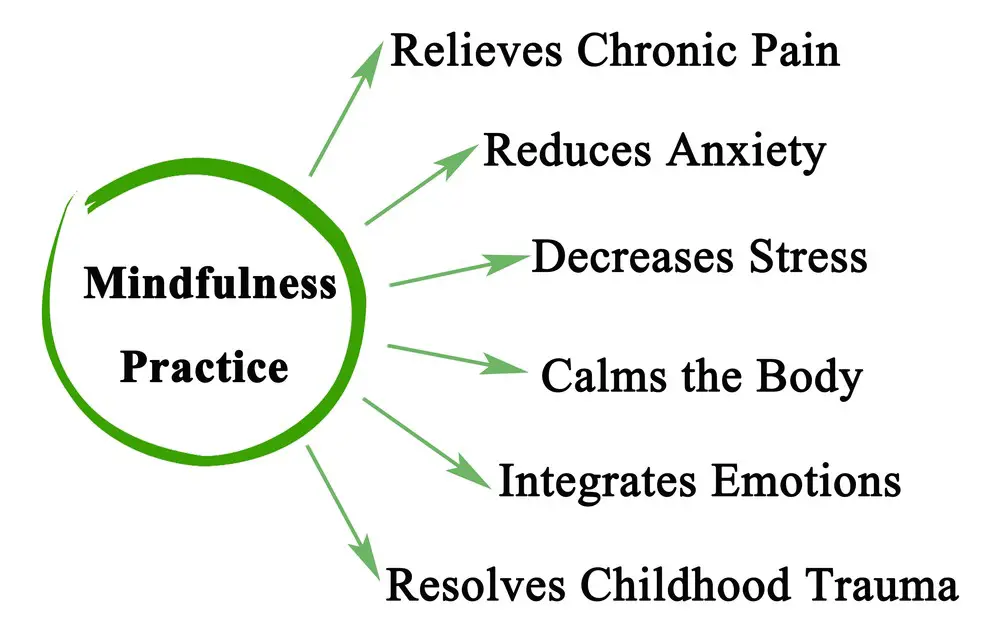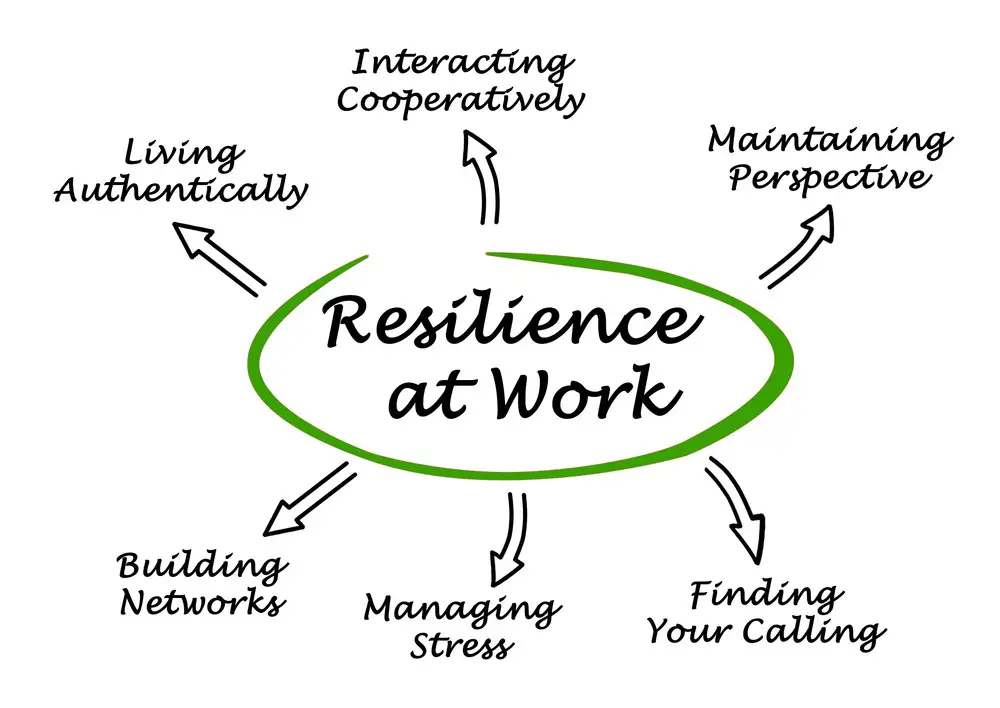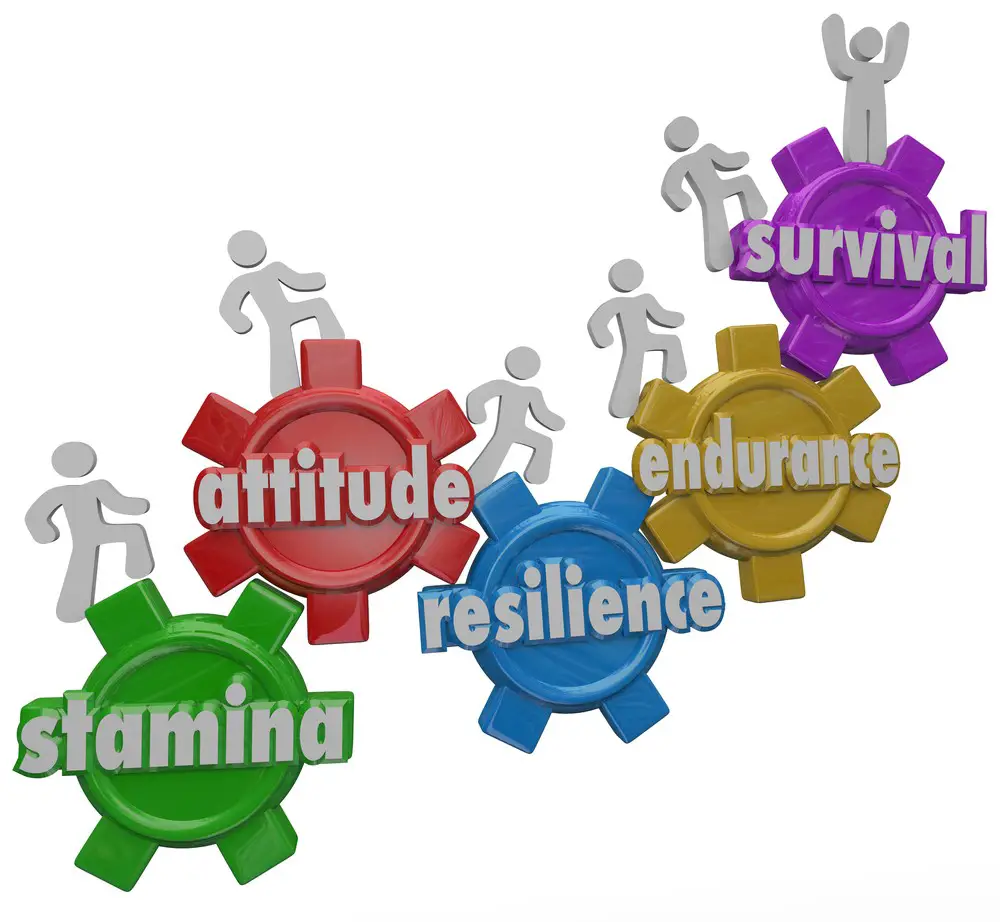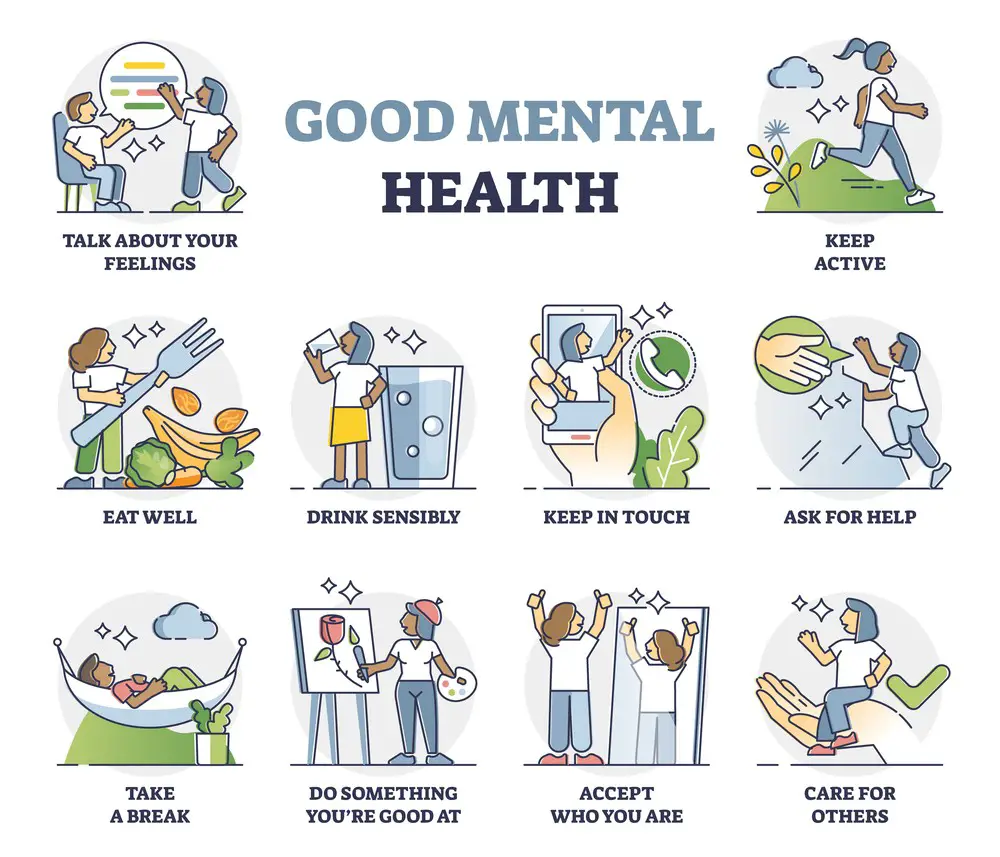Delving into the nature of resilience, we’ve gathered seven insightful perspectives from professionals, such as a Certified Psychology Expert and a CFO. From cultivating resilience through mindfulness to concluding with resilience as a blend of innate and learned qualities, this article explores whether resilience is a teachable or innate quality.
- Cultivating Resilience Through Mindfulness
- Teaching Resilience Through Effort and Failure
- Innate Personality Traits Shaping Resilience
- Developing Resilience Through Personal Growth
- Character and Experience Creating Resilience
- Discovering a Toolkit for Life’s Challenges
- Blending of Innate and Learned Qualities

1. Cultivating Resilience Through Mindfulness
In my experience as a life coach, resilience is a quality that can be taught. While some people might naturally possess a higher limit for adversity, resilience is like a muscle: the more you work on it, the stronger it becomes.
For example, even if you might feel overwhelmed or stressed by life’s ups and downs, through mindfulness practices like meditation or journaling, you can learn to channel your emotions and energy more effectively and eventually bounce back stronger than before.
With the right tools and guidance, anyone can cultivate resilience. It all comes down to building a mindset that views challenges as unique opportunities for growth.
Bayu Prihandito, Certified Psychology Expert, Life Coach, Founder, Life Architekture

2. Teaching Resilience Through Effort and Failure
Resilience is a quality that can be taught, though it’s acknowledged that, like most things, resilience comes easier to some people than others.
As a mother, it’s hard to watch a child attempting to do something and failing. However, it’s also a responsibility to help, though not in the way you may think. By praising the effort of trying and trying again, resilience is encouraged and taught that failure is okay. As the child ages, the hope is to start explicitly discussing what has been learned at each attempt and the plan for the next time.
To be clear, praising children regardless of their effort or intention is not believed to be constructive. However, studies have shown (https://doi.org/10.1111/cdev.12064) that guiding how young children think and feel about hard work causes them to enjoy challenges and generate strategies for improvement, which sounds much like a resilient child.
Beverly Gearreald, Owner, Live Fearless Mentoring
3. Innate Personality Traits Shaping Resilience
Although it would be better if resilience were a teachable quality, the evidence does suggest that resilience is primarily innate.
Resilience is heavily underpinned by indisputably innate personality traits, i.e., emotional stability, positive and negative affect, one’s core self-evaluations, etc. Collectively, these traits act as a personal barrier against stress, especially its more pervasive and harmful effects.
Consequently, some people are inherently more resilient than others, showing significantly less sensitivity to stress and pressure. They didn’t do anything to earn this predisposition; it’s just the luck of the draw.
Naturally, people can learn stress management techniques to help mitigate the impact of stress. Still, these are distinct from a person’s baseline level of resilience, which is a matter of innate individual differences.
Ben Schwencke, Business Psychologist, Test Partnership
4. Developing Resilience Through Personal Growth
Resilience is a quality that can be cultivated and developed over time rather than being solely innate. While some individuals may naturally possess a certain degree of resilience due to their temperament or upbringing, it is a trait that can be nurtured and enhanced through various means. As an attorney, I often encounter clients facing challenging legal situations, and resilience is vital for them to navigate these difficulties effectively.
One critical reason resilience can be taught is that it involves developing coping mechanisms and problem-solving skills. Through education, therapy, and personal development, individuals can learn how to adapt to adversity, manage stress, and find constructive ways to overcome obstacles. This process often includes building self-awareness, emotional regulation, and a positive mindset, contributing to greater resilience.
Mike Schmidt, Civil Trial Law Specialist, Personal Injury Trial Law Specialist by the Texas Board of Legal Specialization, and Civil Trial Specialist by the National Board of Trial Advocacy., Schmidt & Clark
5. Character and Experience Creating Resilience
Resilience is a quality that can be learned, but its foundation lies in our character, etc. Life is so diverse that daily is filled with positive and negative emotions. Negative emotions, in essence, shape our resilience throughout life.
Much depends on our character and attitude toward life. All people are different, and everyone has their threshold, but we can influence the fact that this resilience threshold becomes higher.
Therefore, we draw conclusions from every bad or difficult moment, reject negative thoughts, and move forward.
Iana Varshavska, Digital Marketer and Yoga Therapist, Yanva

6. Discovering a Toolkit for Life’s Challenges
Resilience is often misunderstood as a personal quality. Instead, it’s more about the systems, tools, and resources you’ve put in place to navigate the rocky terrain of life’s challenges. As an entrepreneur, I’ve faced my share of hurdles—from supply chain disruptions to shifts in consumer behavior.
And it’s never been about “toughing it out” as much as it’s been about relying on our established systems and processes to get us through. So, in my view, resilience isn’t an innate quality—it’s a well-calibrated toolkit that helps you steer through the ups and downs, ensuring you come out stronger on the other side.
Nikhil Jogia, Managing Director, Jogia Diamonds
7. Blending of Innate and Learned Qualities
The answer is in the middle. For some, resilience is an innate quality. I don’t believe it can be taught to others, but it can be learned. Experiences like extreme hardships can force us to develop resilience and other beneficial qualities. That’s not being taught; it’s being given the opportunities to tap into and nurture those already present qualities.
Christopher Olson, CFO, Surfside Services

? Can Resilience Be Taught, or Is It Innate? A Deeper Dive ?
Exploring the intricacies of resilience, we’ve woven together a tapestry of insights from seven professionals, including a Certified Psychology Expert and a CFO. This exploration dives into mindfulness, the learning curve through effort and failure, and the subtle dance between innate personality traits and cultivated resilience. Each perspective brings a unique lens to the discussion, shedding light on the delicate interplay between inherent qualities and the transformative power of life experiences.
? Cultivating Resilience Through Mindfulness
Bayu Prihandito, a Certified Psychology Expert and Life Coach leans towards the nurturing side of the resilience debate. He analogizes resilience to a muscle that strengthens with exercise. Through mindfulness practices like meditation or journaling, individuals can channel their emotions effectively, fostering a resilience that helps them bounce back stronger amidst life’s adversities.
? Teaching Resilience Through Effort and Failure
Beverly Gearreald, the owner of Live Fearless Mentoring, shares a parental perspective, emphasizing the value of nurturing resilience through appreciating effort and navigating failure. By encouraging a growth mindset from a young age, children can learn to enjoy challenges and develop strategies for improvement—a hallmark of resilience.
? Innate Personality Traits Shaping Resilience
Business Psychologist Ben Schwencke paints a picture where resilience is an inherited trait deeply rooted in one’s emotional stability and core self-evaluations. However, he acknowledges that stress management techniques can help individuals cope, distinguishing between baseline resilience and learned stress mitigation strategies.
? Developing Resilience Through Personal Growth
Mike Schmidt, a Civil Trial Law Specialist, advocates for the cultivable nature of resilience. Through personal growth avenues like education and therapy, individuals can develop coping mechanisms and problem-solving skills, enhancing their ability to navigate adversities.
?️ Discovering a Toolkit for Life’s Challenges
Nikhil Jogia, a Managing Director, reframes resilience as a well-calibrated toolkit rather than an innate quality. In his entrepreneurial journey, resilience emerges from the reliance on established systems and processes that navigate through business hurdles.
? Blending of Innate and Learned Qualities
Lastly, CFO Christopher Olson perceives resilience as a blend of inherent and learned qualities. He suggests that extreme life hardships can unlock the dormant resilience within individuals, leading to a self-driven nurturing of this vital trait.
? Conclusion: A Colorful Spectrum
As explored through these varied lenses, resilience unfolds as a colorful spectrum blending innate traits and learned skills. The resilience journey seems to be a personal narrative intricately woven with the threads of individual character, life experiences, and the willingness to evolve amidst life’s myriad challenges. Through the dance between the inherent and the acquired, resilience emerges as a dynamic companion in life’s journey, ever-evolving and ripe with potential for growth and transformation.

A Personal Reflection: Resilience Amidst Adversity ?
Living in Israel, a region often faced with conflict, has been my real-life test of resilience. As an expat, navigating the complexities of life here, especially during a war, has fortified my understanding of resilience both personally and within the community I live in.
Israel, a nation known for its undying spirit and resilience, mirrors my mantra— to bend, not break. The collective resilience observed here, especially amidst the young reservists called upon during trying times, is awe-inspiring. Their ability to rise to the occasion, fortified by a blend of innate strength and learned courage, resonates with my resilience journey.
In a way, the ethos of resilience in Israel is a living testament to the blend of innate and learned qualities discussed in this article. The shared spirit of endurance and adaptability amidst adversities is a profound lesson in the human capacity for resilience.

? Recognizing the Need for Therapy: Signs to Look Out For ?
Recognizing the need for therapy is the first step toward nurturing your mental health. Here are some signs that might indicate a need for professional support:
- Persistent Feelings of Sadness or Hopelessness: If you feel down, hopeless, or lost over an extended period.
- Anxiety or Stress: Experiencing high levels of anxiety or stress that interfere with your daily life.
- Sleep Disturbances: Struggling with insomnia or sleeping too much.
- Relationship Struggles: Facing recurring conflicts or dissatisfaction in your relationships.
- Behavioral Changes: Noticeable changes in your behavior or personality.
- Difficulty Coping with Life Changes: Struggling to cope with significant life changes or traumatic events.
? Setting Goals for Therapy: Charting the Path ?
Therapy is a journey of self-discovery and healing. Setting clear goals can enhance the therapeutic process:
- Understanding and Identifying Patterns: Uncover and understand recurring patterns in your behavior and relationships.
- Improving Communication: Enhance your communication skills to build better personal and professional relationships.
- Managing Stress and Anxiety: Develop coping strategies to manage stress and anxiety effectively.
- Enhancing Self-Esteem: Work towards building self-confidence and a positive self-image.
- Processing Trauma: Process past traumas and work towards healing.
- Behavioral Change: Identify and change unhelpful behaviors.
? Monitoring Progress: The Reflection of Growth ?
Keeping track of your progress in therapy is essential to ensure that you are moving towards your goals:
- Regular Check-ins: Have regular check-ins with your therapist to discuss your progress.
- Journaling: Keep a therapy journal to note your feelings, thoughts, and any noticeable changes.
- Feedback from Close Ones: Seek feedback from close friends or family who know your therapy goals.
- Setting Milestones: Set small milestones to achieve within specific time frames.
- Reflecting on Goals: Reflect on your initial goals and how far you have achieved them.
- Being Patient: Progress in therapy can be slow and requires patience. Celebrate small victories along the way!
?? Individual or Couples Therapy: When to Go Solo, When to Pair Up ??
- Individual Therapy: Opt for individual therapy when working on personal issues, coping mechanisms, or mental health conditions. It’s a space solely for your self-exploration and growth.
- Couples Therapy: Choose couples therapy when the issues lie within the relationship dynamics and communication or when you both face a challenging phase and need professional guidance to navigate it together.
The decision between individual and couples therapy depends on the nature of the issues and goals you wish to achieve. It’s not uncommon for individuals to engage in both types of therapy concurrently to work on personal issues while improving their relationship dynamics.
About Jacob Maslow
After surviving the traumatizing events of 9/11, I took it upon myself to heal through helping others. I’m the primary caregiver of my children and understand from first-hand experience the lonely paths you have to walk as a partner and parent when leaving an unhealthy relationship.
We’re all echoing in a dark space that doesn’t have to be this empty, and that’s been my mission since finding solace and recovery in therapy: To help comfort others who are still in shock and at the prime of their struggle.
I came across BetterHelp after searching for this type of community. I wanted to belong to a body of proactive therapists and supportive therapy veterans that allowed me to see other sides of the story.
It was unconventional, and that’s what attracted me most. During my most challenging times, when my ex-wife completely cut me off from my children, I found comfort and clarity through BetterHelp.
Instead of being chained to a strict therapist recommendation, I was in charge of who I felt understood my struggle most. That allowed me to find my true peace, as I was reunited with those who read behind my words and had first-hand experience with my trauma.
Recovery is a choice; with BetterHelp, that choice will be a few clicks away. You can join their couples-oriented platform, Regain.us, for those stuck with family estrangement and toxic relationship patterns.
- The Burnout Epidemic: Why We’re All Feeling Overwhelmed and How to Cope - February 9, 2024
- How to Live a Peaceful Life - February 9, 2024
- Useful Information You Should Know About Health Screenings - February 8, 2024
This site contains affiliate links to products. We will receive a commission for purchases made through these links.




